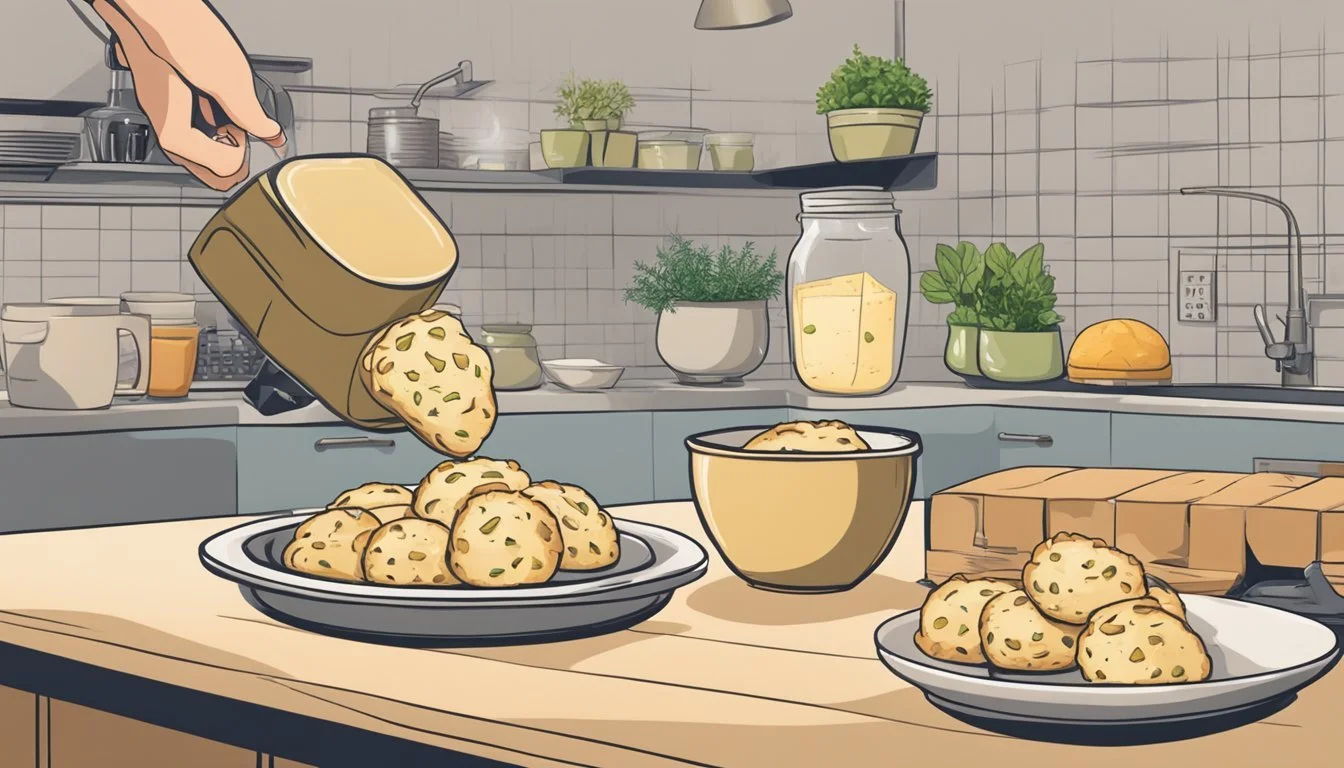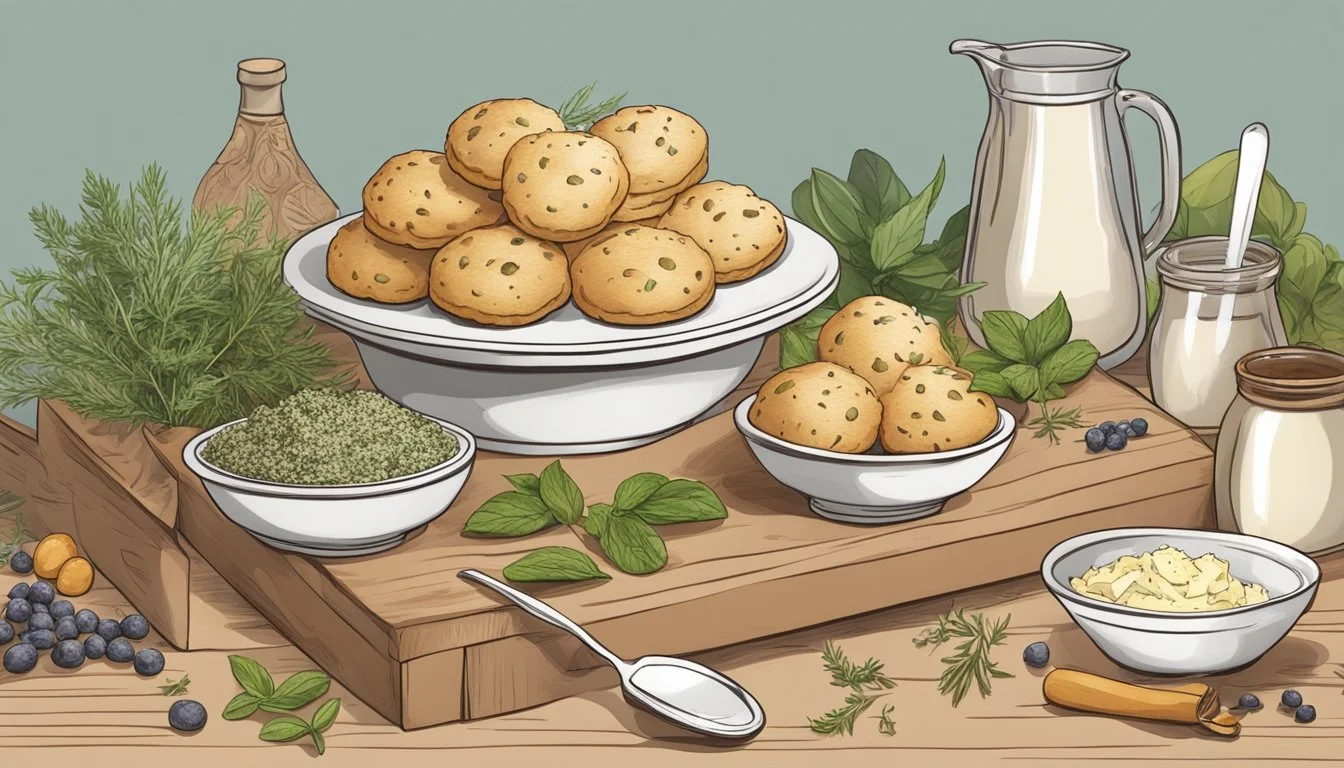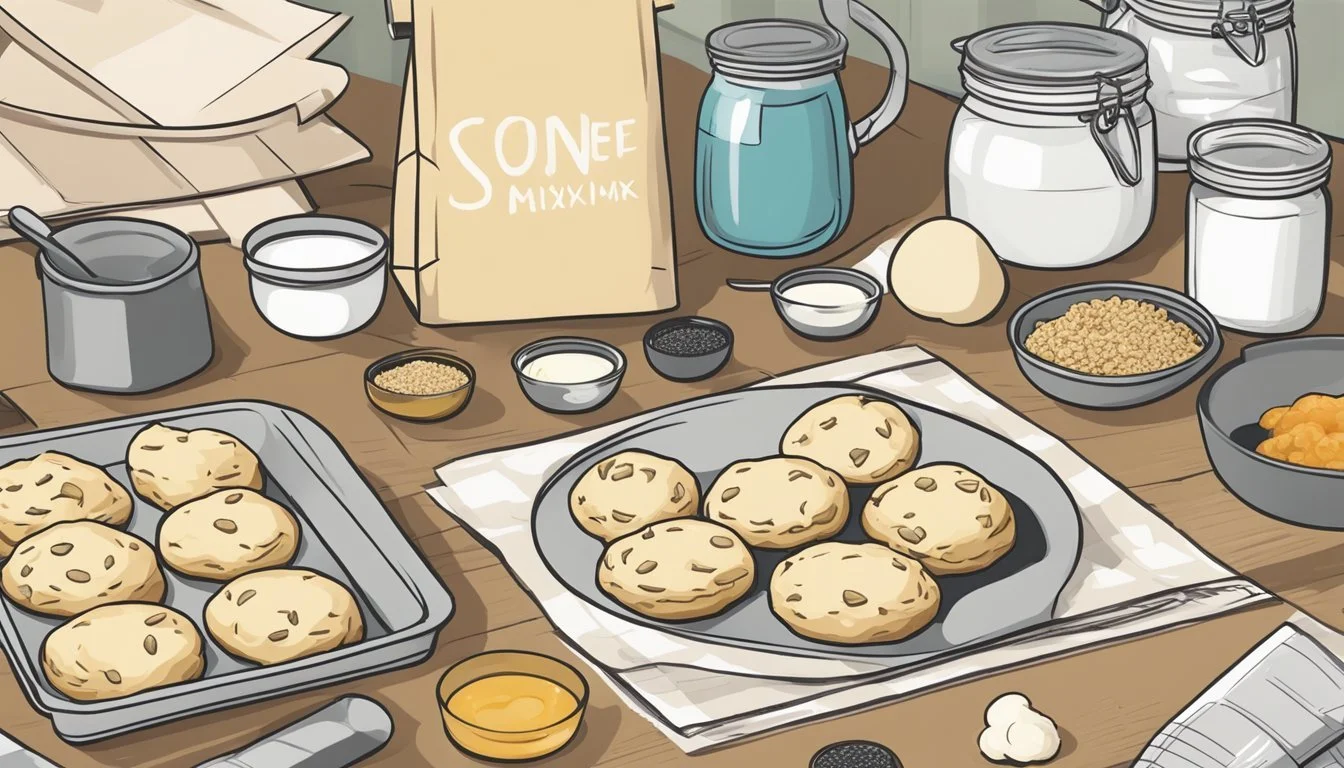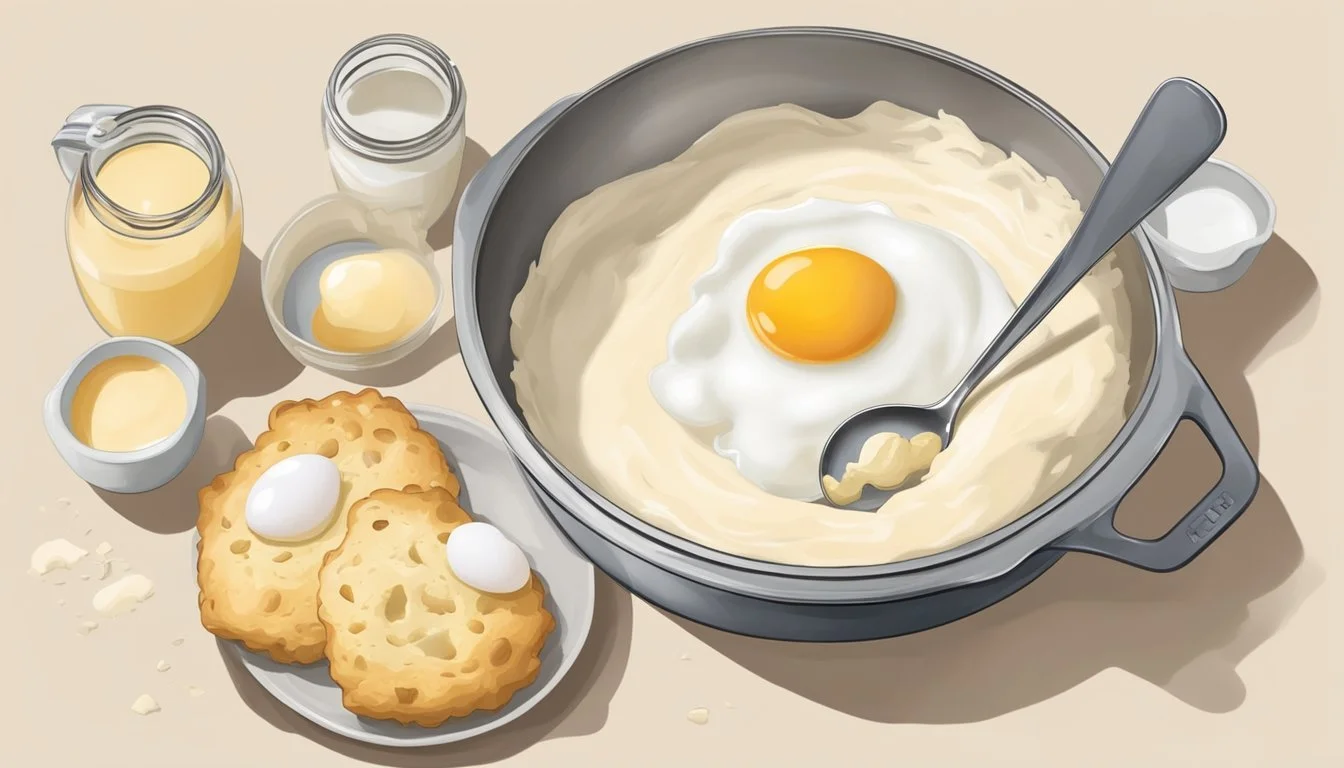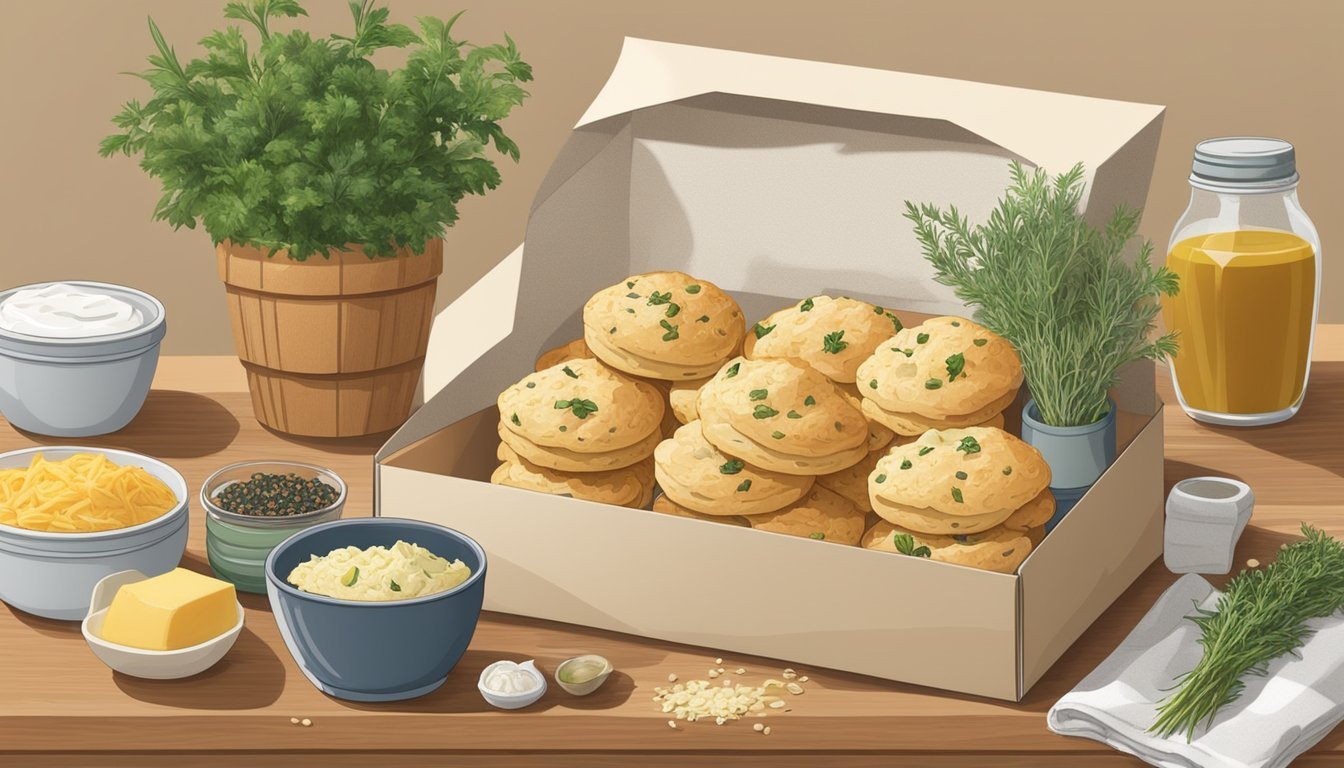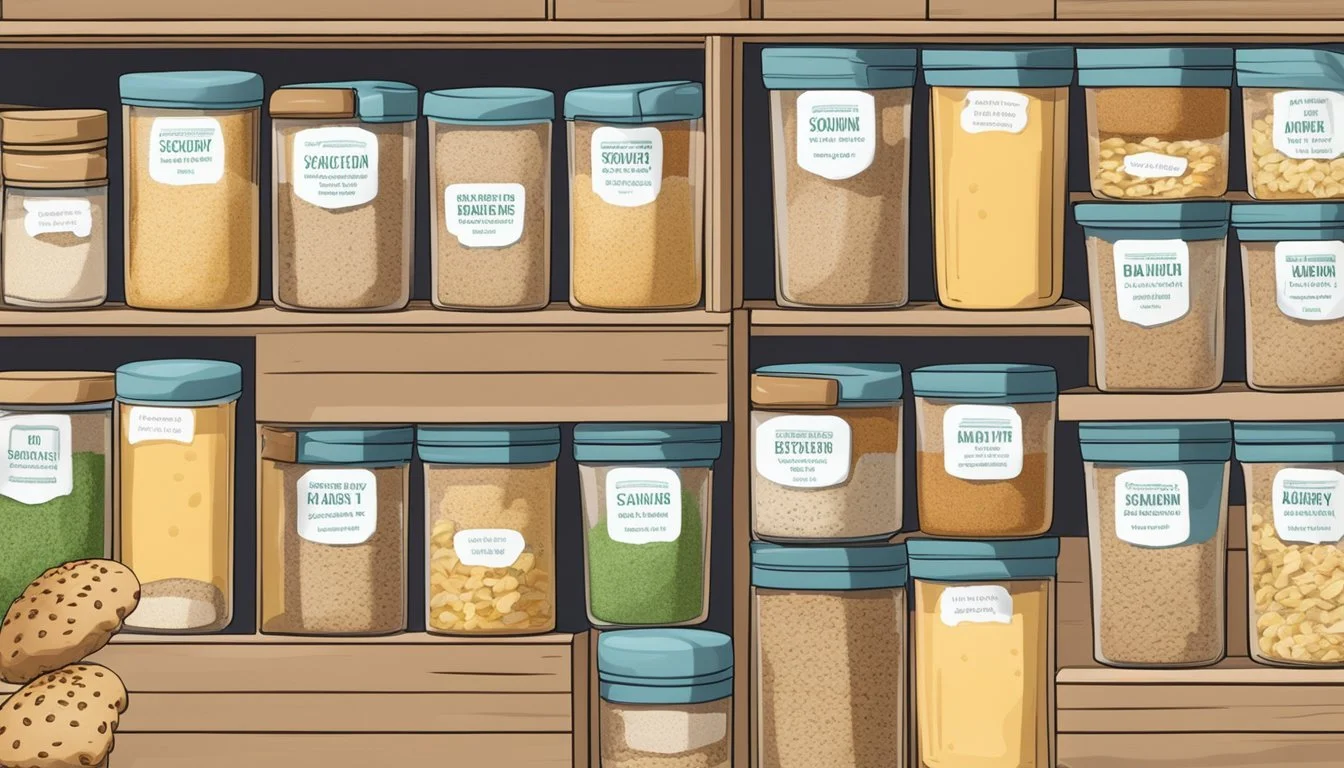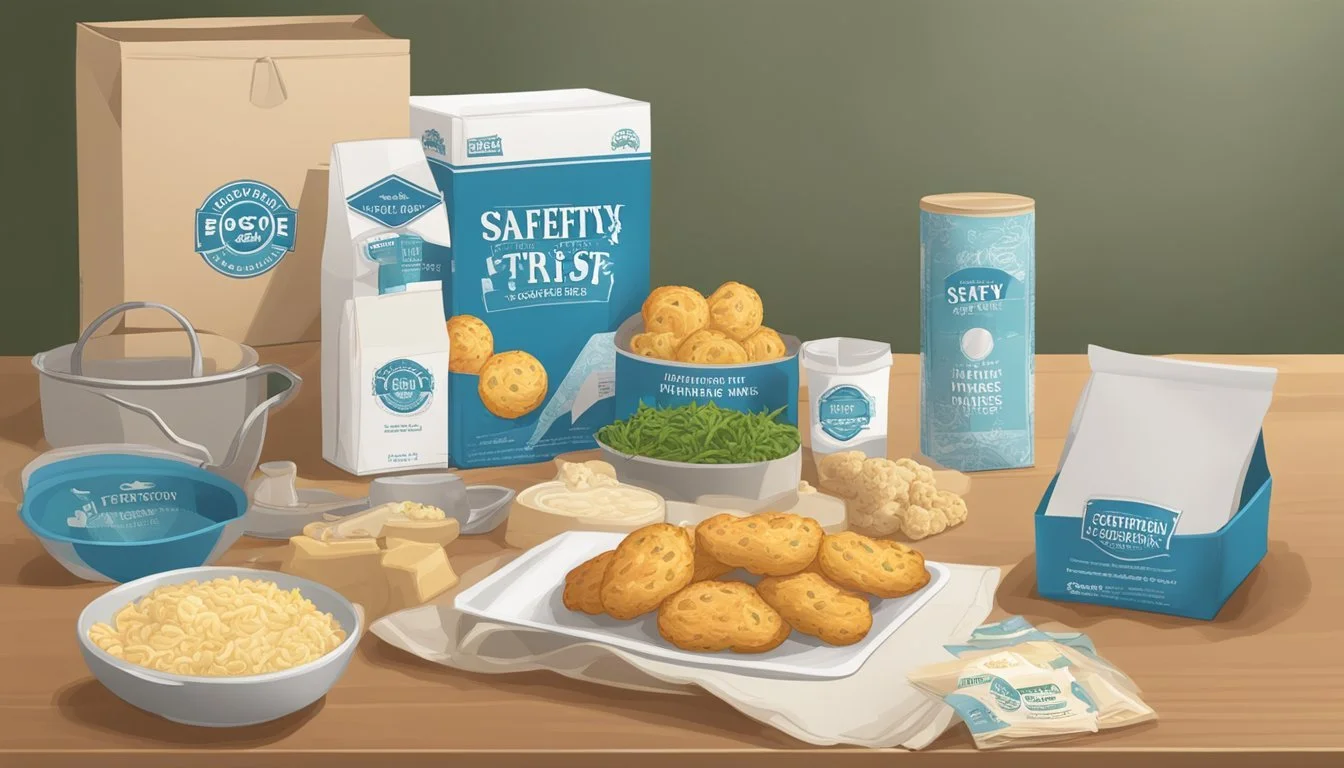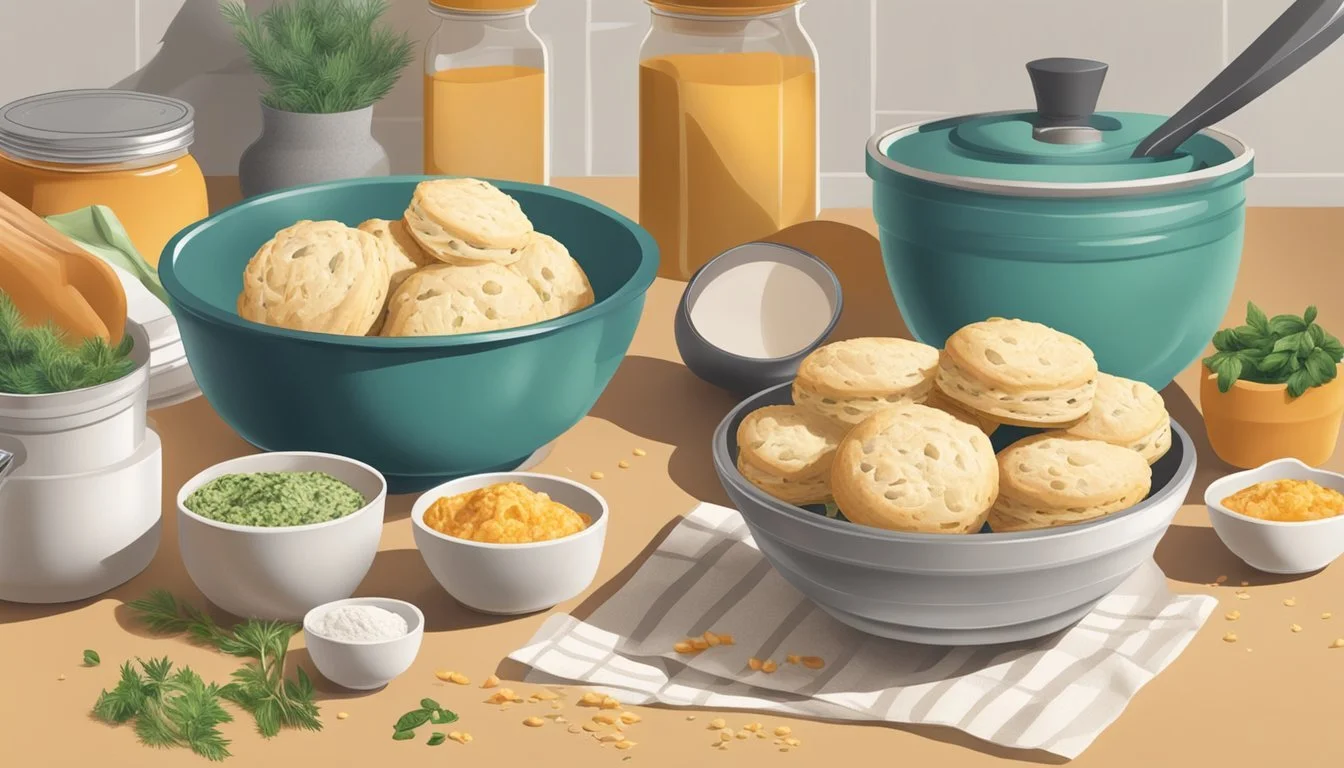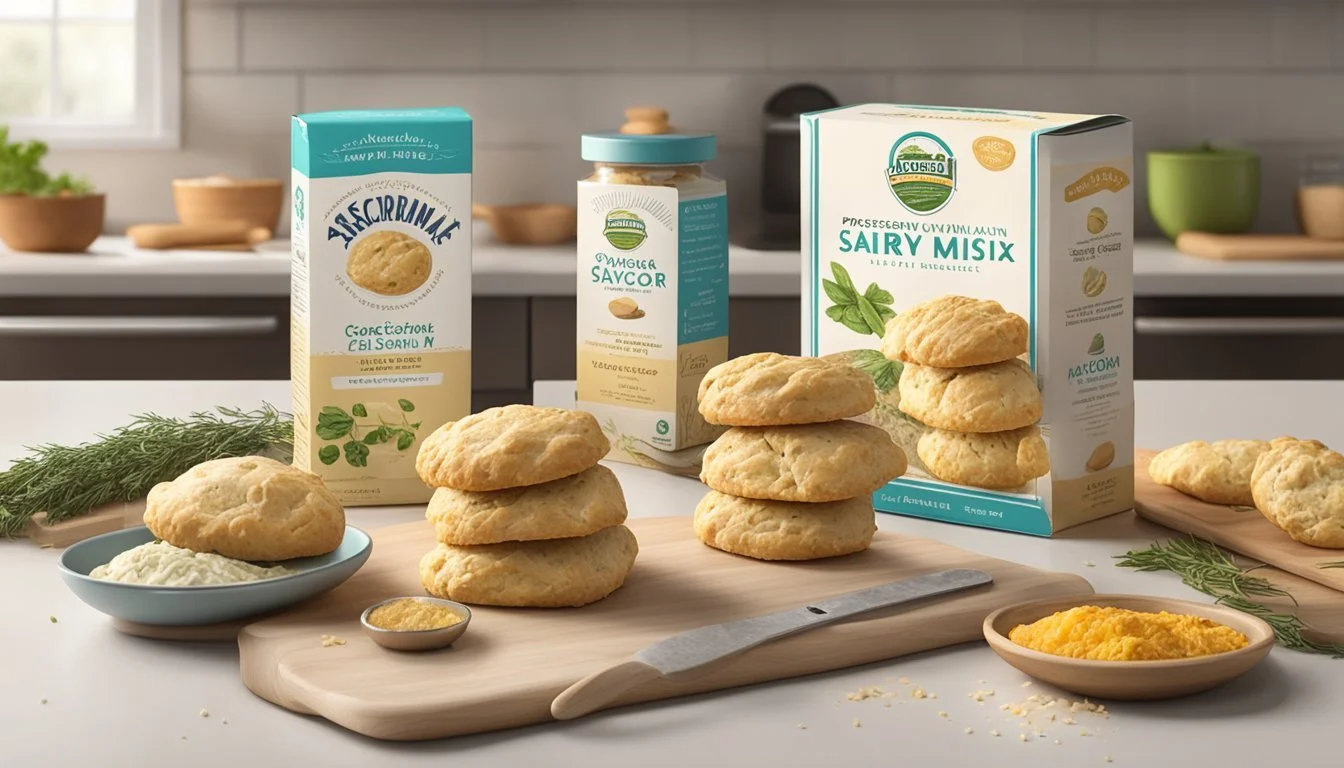Boxed Scone Mix Savory Twists
Elevate Your Brunch with Simple Add-Ins
Scones, a cherished bakery staple hailing from Scotland, have carved out a niche in the culinary world that marries the convenience of boxed mixes with the delightful potential for savory innovations. The versatility of a simple scone mix is its greatest virtue; with the addition of ingredients like sharp cheddar, crispy bacon, or aromatic chives, amateur cooks and seasoned bakers alike can transform the basic into the sublime. These additions not only infuse the pastry with bold flavors but also cater to a versatile array of dining contexts, from a hearty breakfast to an elegant afternoon tea accompaniment.
The process of incorporating savory twists into scone mixes is straightforward and allows for personal creativity. Bakers begin with a high-quality boxed mix as their canvas, following the preparation instructions while introducing their chosen savory elements. The result is a bespoke baked good that belies its humble boxed beginnings and stands out with a homemade taste.
Whether one opts for the classic cheesy and bacon-filled scones or ventures into new flavor territories with herbs and spices, the end product resonates with the comforting essence of home baking. With a few simple ingredients and a box of scone mix, the transition from a plain pastry to a savory treat is simple, rewarding, and appeals to a wide array of palates.
Overview of Boxed Scone Mix
Boxed scone mix provides a convenient starting point for both novice and experienced bakers seeking to create savory scones with ease. The mix typically contains pre-measured dry ingredients, such as flour, leavening agents, and salt, ensuring consistency and saving time in the kitchen. Users only need to add a few wet ingredients, often butter and milk or a substitute, to complete the dough.
The beauty of a boxed mix lies in its versatility. While the basic recipe on the box is a solid foundation, bakers can infuse a variety of savory flavors into their scones by incorporating ingredients such as cheese, herbs, and spices. Here is a simplified breakdown of the typical process:
Preparation: Bakers begin by preheating their oven to the required temperature, which can range from 375ºF to 435°F, and lining a baking sheet with parchment paper.
Mixing: In a mixing bowl, the scone mix is combined with the additional savory components. Butter is usually cut into small pieces and added to the mix, using either a food processor or hands to form a crumbly texture.
Baking: Once the dough achieves the desired consistency, it is shaped into scones and placed onto the prepared baking sheet. The scones are then baked until golden brown, which may take around 15 to 20 minutes, depending on the specific recipe and oven.
Listed below are some popular savory twists that can be added to the mix:
Cheese: Cheddar, parmesan, or feta for a rich, tangy flavor
Herbs: Rosemary, thyme, or chives for aromatic finesse
Spices: A pinch of paprika or black pepper for subtle heat
To achieve the best results, one should meticulously follow the instructions on the box while feeling confident in experimenting with savory add-ins to tailor the scones to their taste. Boxed scone mix serves as a reliable shortcut to enjoying homemade scones without the hassle of measuring out staple ingredients.
Ingredients Analysis
When selecting ingredients for a boxed scone mix, each component plays a specific role in achieving the desired savory taste and texture. The ingredients are closely analyzed for their functions and contributions to the scone's final quality.
Flour Varieties
The foundation of a scone mix is often all-purpose flour, containing a balanced proportion of gluten to provide structure without making the scones too chewy. Some mixes may vary the flour type to adjust the texture or nutritional profile, incorporating whole wheat or gluten-free options that offer different levels of protein and fiber.
Raising Agents
Raising agents such as baking powder and baking soda are crucial for a well-risen scone. Baking powder consists of an acid and base that react to form gas bubbles when wet and heated, while baking soda requires an additional acidic ingredient in the mix to activate. These agents contribute to the characteristic light and flaky texture.
Fats and Their Roles
Butter is commonly used in scones for its role in creating a tender crumb and rich flavor. Unsalted butter is preferred for better control over the overall sodium content. Fats can also come in the form of oils or shortening, each affecting the texture; for example, shortening can make the scones more crumbly. Saturated fat and cholesterol contents are considered for health-conscious consumers.
Flavor Enhancers
Savory scone mixes incorporate flavor enhancers such as salt and sugar, where salt sharpens the scone's overall taste and sugar balances it. Grated parmesan cheese introduces a sharp, salty flavor, while fresh rosemary and basil offer aromatic notes. These ingredients intensify taste experiences and can complement the savory profile of the scone.
Additional Savory Ingredients
Savory mix-ins include cheddar cheese, which introduces a creamy texture and rich taste; sun-dried tomatoes for a touch of umami and tang; and chives, which offer a mild onion-like flavor. These ingredients also add to the visual appeal and offer slight nutritional benefits, such as added protein and fiber.
Baking Essentials
When baking with boxed scone mix and adding savory twists, chefs emphasize the importance of using the right tools and setting up the oven correctly to achieve the desired texture and taste.
Preparation Tools
Baking Sheet: A sturdy baking sheet is essential for even heat distribution. A quality baking sheet ensures that scones bake evenly without burning the bottoms.
Parchment Paper or Silicone Baking Mat: Lining the baking sheet with parchment paper or a silicone baking mat prevents sticking and allows for easy removal of the scones after baking. Additionally, cleanup is simplified.
Pastry Blender: This tool helps in cutting cold butter into the dry mix without warming it, critical for achieving flaky layers in those savory scones.
Wet Ingredients at Room Temperature: Incorporating wet ingredients like eggs or cream that are at room temperature helps create a uniform dough that rises properly.
Oven Setup
Preheating: Users must preheat the oven to the correct temperature as indicated by the scone mix instructions - typically around 375ºF (190ºC) for savory scones.
Baking Temperature: Different ovens may have minor fluctuations in temperature. An oven thermometer ensures accurate heat settings to prevent over or underbaking the scones.
Wire Rack: After baking, placing scones on a wire rack allows air to circulate and ensures they cool without becoming soggy, preserving their texture and taste.
Step-by-Step Baking Instructions
Transforming a boxed scone mix into a delectable savory treat is straightforward when you introduce ingredients like cheese, chives, and bacon. The following steps will ensure that every batch turns out perfect and delicious.
Mixing and Kneading
To begin, one must preheat their oven to the optimal temperature, typically around 375 degrees Fahrenheit. They will then focus on enhancing the boxed mix by incorporating the additional savory ingredients. It's advisable to thoroughly combine the dry ingredients in a large bowl first. This includes the contents of the scone mix, grated cheddar, and any additional herbs or spices that the specific recipe calls for. If the recipe suggests it, they might also add in small pieces of cold butter using a pastry cutter or fork until the mixture has a crumbly texture. Next, they should fold in any extra savory components like cooked bacon cut into pieces and finely chopped chives, keeping the ingredients as evenly distributed as possible. Once the mix is appropriately prepped, they slowly add cold liquid—whether it be cream, buttermilk, or an alternative—as per the recipe's specifications, stirring until a sticky dough forms. They should knead the dough gently until it is just combined, being careful not to overwork it to maintain a tender scone.
Shaping Scones
Shaping the scones correctly is crucial for even baking. They should place the dough on a lightly floured surface to prevent sticking and then press or roll it out into a rough circle or rectangle at about an inch thick. Using a knife or pastry cutter, they'll then divide the dough into even triangles or use a round cutter for circular scones. For extra richness, one can brush the top of the scones with a bit of egg wash or milk before baking.
Baking Time and Temperature
The keyed-in oven should now be at temperature, ready for the scones. They need to arrange the shaped dough onto a baking sheet lined with parchment paper, providing enough space between each scone since they will expand during baking. The scones typically bake for 15 to 20 minutes, though this can vary depending on the recipe and oven. They are done when they boast a golden-brown hue on the surface and are firm to the touch. To ensure an even bake, they may rotate the baking sheet halfway through the cooking time. Once baked, they should allow the scones to rest on the baking sheet for a few minutes before transferring them to a wire rack to cool slightly. They are best enjoyed warm, offering a perfect balance of golden crust and soft, savory interior.
Variations and Twists
Experimenting with boxed scone mix can lead to delightful variations, from incorporating robust herbs and savory cheeses to adding sweet surprises. These adaptations allow for a range of flavors suitable for any meal or occasion.
Herbs and Cheese
For a savory scone, one can infuse the dough with fragrant herbs such as rosemary, basil, or thyme. These herbs can be complemented by strong cheeses, like sharp cheddar. Here's a quick guide:
Rosemary & Cheddar Scones: Add 1 tbsp finely chopped fresh rosemary and 1/2 cup grated cheddar.
Basil & Parmesan Scones: Mix in 2 tbsp chopped fresh basil and 1/4 cup shredded Parmesan.
Thyme & White Cheddar Scones: Use 1 tsp fresh thyme leaves and 1/2 cup crumbled white cheddar cheese.
Sweet Additions
Transforming a savory scone mix into a sweet scone can be as simple as introducing fruits or sweet compounds:
Berries: Fold in 1/2 cup of fresh berries (strawberries or blueberries) to the dough.
White Chocolate & Orange Cranberry: Add 1/4 cup white chocolate chips and 1/4 cup dried cranberries along with 1 tsp orange zest.
Banoffee Scones: Incorporate 1/2 a diced banana and 1/4 cup toffee bits to the mix.
Alternative Mixes
One can creatively utilize various cake mixes to craft unique scone varieties that differ from the standard savory or sweet scones:
Cinnamon Roll Scones: Integrate 2 tsp of cinnamon into the dough and a swirl of brown sugar. Top with a vanilla glaze made with powdered sugar and vanilla extract.
Lemon Glaze Scones: Add the zest of one lemon to your mix and finish with a zesty lemon glaze.
Cookies and Cream Scones: Use a cookies and cream cake mix and fold crushed cookie pieces into the prepared dough.
Nutritional Information
Scones made from boxed mixes can vary in their nutritional content based on the specific brand and any additional ingredients required or added. Generally, they are a source of carbohydrates and provide a moderate number of calories. When making savory scones, additional ingredients like cheese and butter can increase the fat content, particularly saturated fat.
Typical nutritional values per serving for a basic boxed savory scone mix might be as follows, but it's essential to read the specific packaging for exact figures:
Calories: Estimated 150-250 kcal
Saturated Fat: 2-5 g
Cholesterol: 10-30 mg
Sodium: 300-500 mg
Carbohydrates: 20-30 g
Dietary Fiber: 1-3 g
Protein: 4-6 g
When savory elements like bacon, cheese, or butter are added, these values, especially for fat, saturated fat, and sodium, can increase significantly. For a healthier variation, one may consider using low-fat cheese or reducing the amount of added bacon.
Some savory twists on scone mix that include herbs and vegetables may provide additional nutrition benefits, such as increased fiber from the vegetables or a variety of vitamins and minerals from herbs.
For dietary considerations, it is crucial for consumers to consider the entire nutritional profile, which includes monitoring not only calories and macronutrients but also micronutrient content and potential allergens. Additionally, the fiber content in scones is often low, so pairing them with a fiber-rich side dish could balance the meal.
Proper Storage and Shelf Life
When storing boxed scone mix and savory twists, there are optimal methods to retain freshness and extend shelf life. Understanding the proper storage techniques for both short-term and long-term scenarios is crucial.
Short-Term Storage
For short-term storage, keeping scones at room temperature is appropriate if they are to be consumed within 1-2 days. They should be placed in a sealed container to prevent moisture loss and protect against external odors. It's recommended to:
Line the bottom of the container with a paper towel.
Arrange the scones on top and cover them with another paper towel to absorb excess moisture.
Long-Term Storage
For extending the shelf life beyond a couple of days, freezing offers the best solution:
Freezer Storage Guidelines Cooling Ensure scones are at room temperature before freezing. Pre-Freezing Place on a baking tray and freeze until solid to prevent sticking. Packaging Transfer to an airtight, freezer-safe container or wrap in plastic wrap. Consume Within Ideally, use frozen scones within 3 months for best quality.
When ready to enjoy, scones can often be baked or reheated directly from the freezer without the need for defrosting.
Reheating Guidelines
When one wishes to enjoy savory twists from a boxed scone mix, reheating them properly is crucial for maintaining their texture and flavor. Below are methods to reheat scones effectively.
Oven Method:
Preheat the oven to 300°F (150°C).
Place the scones on a baking tray lined with parchment paper.
Heat them for 5-10 minutes.
This method is ideal for reheating multiple scones evenly, preserving a desirable outer texture and soft center.
Microwave Method:
Set the scones on a microwave-safe plate.
Reheat for a few seconds at a time.
The microwave is suitable for a quick reheat and is especially convenient when reheating a small number of scones. However, this may not maintain the scone's original texture as effectively as the oven.
Reheating Method Temperature Time Oven 300°F (150°C) 5-10 minutes Microwave Not applicable Short intervals
For the best results, one should let the scones reach room temperature before reheating. If the scones feel dry, it's advisable to moisten them lightly with water before placing them in the oven or microwave. These guidelines adhere to fundamental reheating practices, ensuring one's savory scones are warmed through and enjoyable.
Safety Precautions
When using a boxed scone mix to create savory twists, ensuring safety in the kitchen is essential. One must approach the activity with careful attention to detail, particularly when dealing with ovens and ingredients that need to be at room temperature.
Oven Safety:
Before baking, one should always preheat the oven to the correct temperature, as specified on the scone mix box.
It's vital to use oven mitts when placing the baking sheet inside the oven to prevent burns.
Keeping flammable materials away from the heated oven is also important.
Ensuring that the oven is turned off after baking is a critical step to avoid any potential hazards.
Room Temperature Ingredients:
Certain ingredients, such as butter or cream, may need to be at room temperature to ensure proper mixing. Planning ahead to take these ingredients out of the refrigerator is crucial.
However, users must avoid leaving perishable items out for extended periods, which could lead to bacterial growth.
Table Example: Summary of Key Temperature Tips
Ingredient Room Temp Range Note Butter 68°F - 72°F Ensures easier blending Cream (if used) 68°F - 72°F Helps with a smoother dough consistency
They should also remember to:
Wash hands before and after handling the scone mix to maintain personal hygiene.
Keep the preparation area well-lit to avoid any mishaps due to poor visibility.
Read labels carefully to ensure that they are not allergic to any ingredients in the scone mix.
By adhering to these straightforward but essential safety precautions, anyone can confidently enjoy baking savory scone twists.
FAQs and Troubleshooting
Question: Why didn't my scones rise properly?
Answer: Ensure that the baking powder is fresh, as it can lose its potency over time. The rule of thumb is to replace it if it's more than six months old. A proper rise also depends on the oven temperature, so verify that the oven is properly preheated.
Question: How can one make the scones more moist?
Answer: Scones require a delicate balance of wet and dry ingredients. If scones are too dry, consider adding a bit more butter or a splash of milk. Butter should be cold and cubed to ensure the scones are flaky and moist.
Question: Can you bake scones straight from the freezer?
Answer: Yes, scones can go from freezer to oven without thawing; just add a few minutes to the baking time. It's important to preheat the oven first to ensure a consistent bake.
Storing Scones
Do Don't Store in an airtight container. Leave scones uncovered, as they will dry out. Consume within 1-2 days for best quality. Wait too long to consume, as they can become stale.
Freezing Scones
Pre-Baking: Shape the scones, place them on a tray, and freeze until solid. Then store in a freezer-safe bag.
Post-Baking: Allow them to cool completely, wrap them, and store in a freezer-safe container.
Remember to use a thermometer to check the oven's internal temperature for accuracy. If the scones are browning too quickly, one can tent them with foil to prevent over-browning. For storage, scones can be kept at room temperature but they are best enjoyed fresh. When freezing, labeling with the date can help keep track of freshness.
Glossary of Terms
All-purpose flour: A staple in savory scone mixes, which provides the structure due to its gluten content. It contains carbohydrates, protein, and a small amount of fiber. It's versatile, suitable for a wide range of baked goods.
Rosemary: An aromatic herb often used in savory scone mixes for its distinctive piney flavor. Rosemary pairs well with cheeses and adds a Mediterranean touch to the scones.
Basil: Another common herb in savory scones, basil offers a sweet and peppery taste. It infuses the scones with an Italian flavor profile and complements cheese flavors well.
Cheddar cheese: A popular cheese choice for savory scones due to its tangy and sharp flavor. It provides protein, saturated fat, and a rich taste. The cheese also contributes to the texture, giving a moist crumb to the scones.
Carbohydrates: The primary energy source found in ingredients like all-purpose flour. Carbohydrates are responsible for providing quick energy upon consumption of the scones.
Fiber: While not as prominent in scones, fiber can be found in whole-grain flours if one chooses a mix that includes them. Fiber aids in digestion and is essential for a balanced diet.
Protein: Present in all-purpose flour and cheddar cheese. Protein adds to the nutritional value of scones, contributing to satiety and muscle maintenance.
Baking powder: A leavening agent that's crucial in giving scones their lift and airy texture. When combined with moisture, it reacts and releases carbon dioxide, helping the dough rise.
Glaze: Sometimes used in savory scones to create a shiny finish. Glazes can be simple, often made with egg wash or milk, and sometimes seasoned with herbs for a flavor boost.
Saturated fat: This type of fat is found in ingredients like butter and cheddar cheese. While it adds to the rich flavor of the scones, it should be consumed in moderation for a balanced diet.

